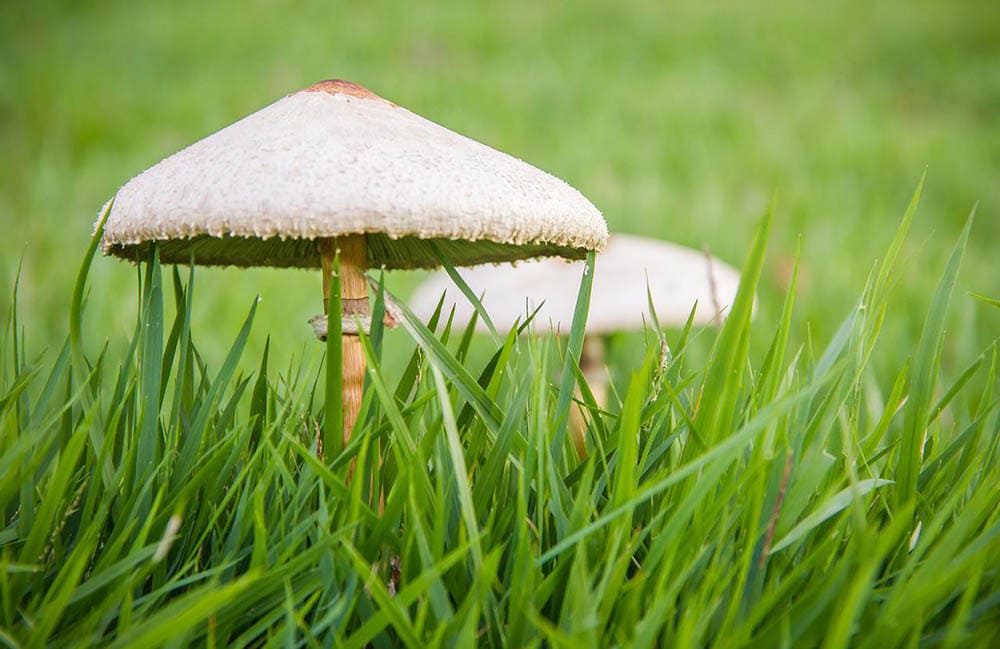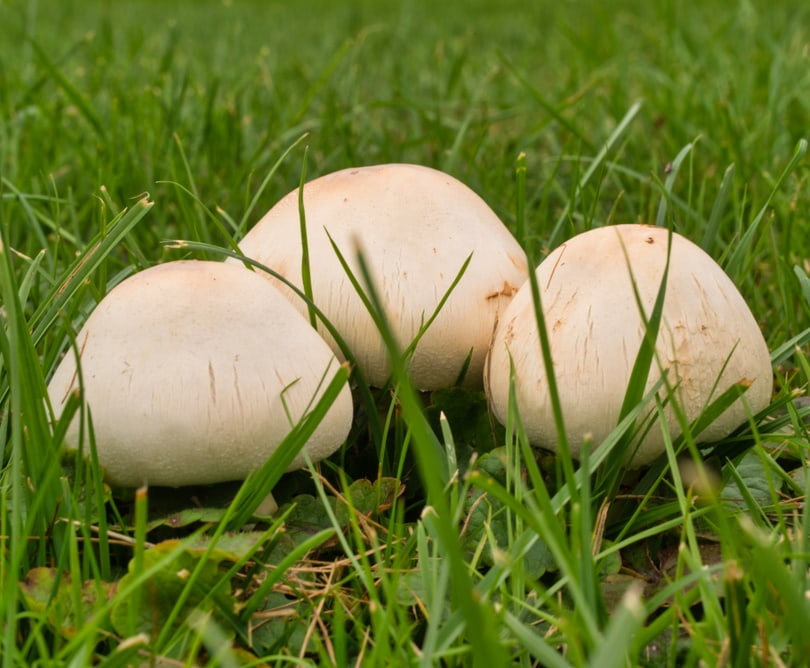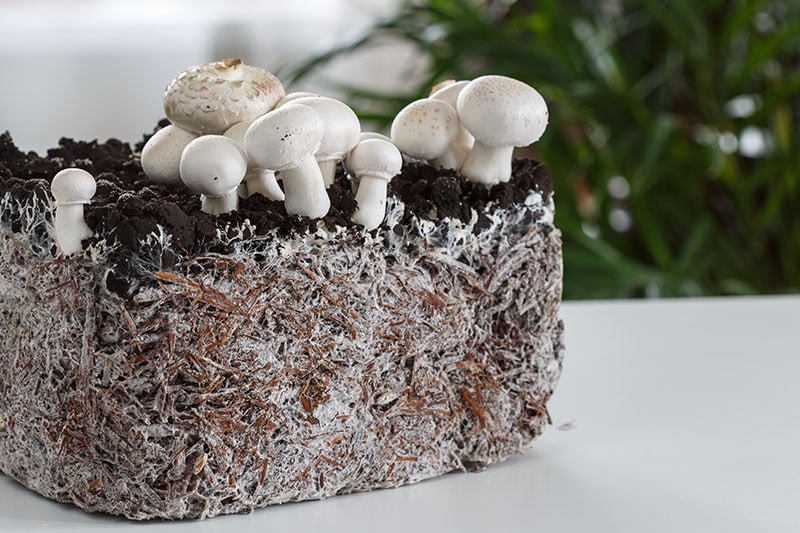Do Mushrooms Have Roots? (What They Have Instead)
-
Pete Ortiz
- Last updated:

There are approximately 11,000 mushroom species in North America alone.1 You can find them in your yard, in parks, and in natural forests across the country. They make for an incredibly delicious and nutritious meal that you can prepare in as little as ten minutes.
If you love mushrooms, you might be curious about whether they have roots like other vegetables. The short answer is no, but it gets much more complicated. Instead of roots, they have mycelium. Today, we’ll explore what mushrooms have in place of roots. Without wasting much time, let’s dive straight into it.
Why Don’t Mushrooms Have Roots?
The simple reason why mushrooms don’t have roots is that they’re not plants. Botanically, they’re fungi and belong to the kingdom Mycota. Fungi don’t have chlorophyll like plants do, which means they can’t produce their own food through photosynthesis.
Instead, they get their energy from other sources, such as decaying matter or other organisms like trees. They spread their spores through the air rather than relying on roots to spread and absorb nutrients. As a result, they don’t need the same structures that plants do.

What Do Mushrooms Use Instead of Roots?
Mushrooms may not have traditional roots like other plants, but they still have parts that perform similar functions. The most familiar part of a mushroom is the stem and cap, but underneath that, there’s a web of thin strands called mycelium.
Mycelium absorbs nutrients from the soil or other substrates. These nutrients include carbon, phosphorus, potassium, and carbon. It also helps anchor the mushroom in place and provides structural support. In some cases, mushrooms may also have specialized structures like rhizomorphs or chitin threads that also help with nutrient absorption and propagation.
What Is Mycelium?
As mentioned earlier, mycelium is a web of thin strands that form the root-like structure underneath mushrooms. It’s made up of hyphae, which are thread-like filaments that branch out from one another in a similar fashion to roots.
Mycelium can spread across large areas of soil and even grow between rocks, leaves, and logs. This allows it to absorb more nutrients than the shallow root systems of plants and enables mushrooms to thrive in a wide range of habitats.
It’s also worth noting that mycelium can form beneficial relationships with other organisms. For example, some species of fungi form symbiotic relationships with trees. In exchange for carbon, mushrooms provide these trees with essential nutrients like nitrogen, helping them grow and survive in otherwise inhospitable environments.
How Can I Grow Mushrooms at Home If They Don’t Have Roots?
Mushrooms are a staple for most gardens in the country. Mushrooms grow differently from other vegetables because they’re not plants. First off, unlike most other vegetables, mushrooms actually do well indoors. What’s more, mushrooms don’t grow from seeds but from spores instead. If you’re looking to grow them at home, follow the steps below.
1. Buy Mushroom Spores
The first step is to buy mushroom spores from a reputable supplier. There are many online companies that sell high-quality spores at reasonable prices. Make sure you purchase the correct type of spores for your desired species and environment.
2. Prepare the Growing Medium
Once you have your spores, it’s time to prepare the growing medium. Depending on the type of mushroom you’re growing, this can range from soil to sawdust or compost. Place the growing medium in a large tray or on the ground if you plan to grow your mushrooms outdoors. Make sure the substrate is moist and sterile before you add the spores.
3. Plant the Spores
Once your medium is ready, it’s time to plant your spores. If you have purchased pre-mixed spores, simply sprinkle them evenly over the substrate. If you have purchased individual spore prints, use a sterile toothpick to place them in small clusters on the growing medium.

4. Keep the Growing Medium Moist
As with any other type of gardening, keeping the growing medium moist is essential for successful mushroom cultivation. Use a spray bottle to mist the substrate every day until the mushrooms begin to appear.
5. Incubate the Spores
The first three weeks are extremely crucial for the growth of your mushroom. Keep the growing medium temperature at 70 degrees Fahrenheit to promote mushroom growth. You can use a seedling heat mat or just place your tray in a warm region of your house.
6. Grow and Harvest the Mushrooms When Ready
Once the mushrooms are visible, it’s time to harvest them. Depending on the species, they should be ready for harvest within three to four weeks. When harvesting, make sure you remove the entire mushroom, including the stem and cap. Doing so ensures that no spores that could spread to other areas of your garden and contaminate it get left behind
7. Store Your Mushrooms
Once you harvest your mushrooms, make sure to store them properly. Wrap them in a damp paper towel and keep them in the refrigerator for up to 1–2 weeks. You can also freeze them for longer storage if needed.
Mushrooms are a great source of riboflavin, niacin, potassium, and fiber. Serve them with your favorite side dishes for a delicious and nutritious meal.
FAQs
What Does Mycelium Look Like?
Mycelia are small, thread-like strands of white, gray, or brown. They look like spider webs and can be found in the growing medium.

Are all Mushrooms Edible?
No, some mushrooms are poisonous and should not be eaten. It’s important to familiarize yourself with the different types of mushrooms before harvesting them. If you’re unsure, consult a mushroom expert or do your own research to make sure they’re safe to eat.
Can I Grow Mushrooms Year-Round?
Yes, it’s possible to grow mushrooms year-round in some climates. However, it’s important to understand the environmental conditions needed for successful mushroom cultivation and adjust accordingly. For example, you may need to provide extra warmth or moisture depending on the season and species of mushroom you’re growing.
What Supplies Do I Need for Mushroom Cultivation?
At a minimum, you’ll need spores, a growing medium, and a container to plant them in. Depending on the type of mushroom you’re growing, you may also need additional supplies such as misting bottles, seedling heat mats, or other equipment.
Final Thoughts
So, no, mushrooms don’t have roots, but they have mycelia which work just as well. With the right spores, environment, and care, you can successfully cultivate mushrooms at home. Just don’t forget to store them properly so they don’t go bad before you can enjoy them. All the best with growing your mushrooms at home!
Featured Image Credit: augustojunior843, Pixabay
Contents



